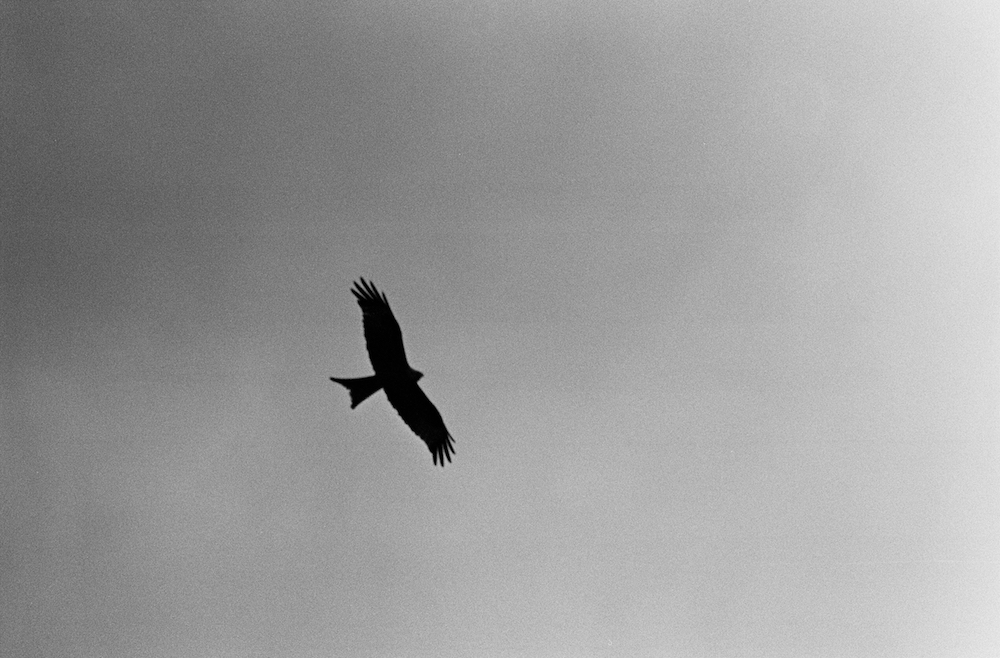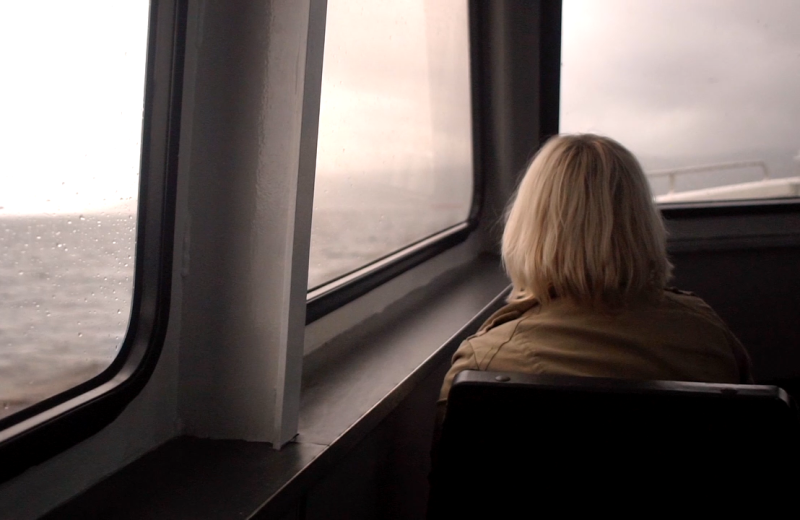Beacon Bound, Part I: The Collapse
/In memory of his grandfather, Nicholas Herrmann walks the length of The Ridgeway: an ancient road stretching for eighty-seven miles across chalk downland, from Overton Hill to Ivinghoe Beacon. We will be following Nicholas’ journey here on the Elsewhere blog over the next couple of months.
When a star dies, the collapse creates an event of such immense gravitational force, matter is compelled from far and wide, and all light is extinguished. That point in space, once brilliant and warm, turns impossibly dark.
This is the image I have in my mind on the day my grandfather dies. The family is gathering at the house, and I’m speeding eastward on my way to say goodbye. The twenty-year-old car rattles and shakes, struggling to do seventy, and as I wedge the drooping window with an elbow, I remember from whom the car was inherited.
The red kite signifies the beginning of the Chilterns. Usually, its presence is comforting, telling me I’m close to my childhood home. On the M4, they appear around Newbury, their distinctive shapes patrolling the skies at the limits of some invisible boundary. I see one now, urging me on like a herald, soaring on an updraft as it leads me towards the tragedy.
Several hard hours later, we fill the house with memories. His gentleness, his mischief and decorum, his astounding knowledge of the natural world. The January sun shines a cold light onto dregs of Earl Grey. With energy left only to sit still, my father speaks an idea into the silence: he will walk the length of the Ridgeway – that ancient track that John, my grandfather, loved, and lived beside for much of his life. Eighty-seven miles from Overton Hill in Wiltshire, northeast along the North Wessex Downs and Chiltern Hills, to Buckinghamshire’s Ivinghoe Beacon. Britain’s oldest road.
There is unanimous support for the idea. A plan is quickly formed and agreed upon: my father and I will walk the route in stages, others joining us whenever they are able. We rise to leave. As I pull on my coat, a Post-it catches in the corner of my eye – something destabilising, at once familiar and strange. A small reminder, of something done or undone, written by someone else in my own handwriting. Another inheritance.
*
We start on Good Friday. As we load our packs into the car, a pair of red kites fly out from their nest in a nearby beech tree and circle us. Their call: half whistle, half screech, steady like a kettle on a camping stove. They fly low, their kiln-coloured breasts almost skimming the chimney. We stop and watch in the light rain, able to make out every mark on their speckled chests, every feather on their ashen heads. Red, white, yellow, black: all the colours of heat. Like winged devils they twist their singed wingtips and flick their forked tails. Then they pitch and roll away together over the fields, two embers drifting on the wind.
Scavengers, survivors, masters of extinction. As they once did in medieval times, kites fill the sky above Reading. At any given time, you can look up and see two or three of these raptors stalking the suburbs. But in the 1930s, after decades of persecution, just one or two pairs remained in the UK. Now, Britain acts as a lifeboat for the species – there are thought to be around 2,700 breeding pairs after a 1989 reintroduction in the Chilterns. And their numbers in Reading are on the rise. A study from 2015 found over four percent of households purposefully leave out meat for the birds, causing hundreds to commute into town each day from the surrounding countryside.
Avebury stone circle lies a mile and a half away from the start of our journey, so we make a stop to remind ourselves of its might and mystery. A crow lands on a megalith, oblivious, or uncaring. I place a palm on a pockmarked, rain-slick stone twice my height, its purpose lost to the ages. We make our way south, circle Silbury Hill – cumbersome and impenetrable – and pass the West Kennet Long Barrow, haunting us from a hilltop. The beginning of the Ridgeway is a car park that sits beside three squat tumuli, too regular on this topography to be given names.
This place undermines time. Prehistory and present congeal like the rain-churned paths orbiting Avebury, a thousand footsteps preserved in mud.
The Ridgeway National Trail was opened in 1973, and is just a section of a five-thousand-year-old route that used to run from the Dorset coast all the way to the Wash in Norfolk. In prehistoric times, the plains and lowlands were heavily forested and covered in undergrowth, making progress near impossible. The chalk provided a way through, drier underfoot, less impeded by vegetation. The trail we know today comprises two different ancient highways stretching across five counties and divided neatly by the Thames – the Ridgeway to the west, the Icknield Way to the east.
I step over the threshold. The chalk track stretches out in front of me, a steady incline of white on green, clinging to the contours of the Marlborough Downs. Stuck between seasons, the landscape sags under the accumulated weight of the rain, the track transformed to a gritty paste beneath me. To our right, woody tangles of hazel, gorse and hawthorn. To our left, fields curve down to villages and farms safely tucked into the combes below. Everywhere, we pass the sleeping noble dead, their resting places marked by clumps of beech dotted across the undulating landscape.
It’s quiet on the ridge. The weather is deadening, driving wildlife to its shelters. We pass rook nests and badger setts, unreachable and dark. I imagine these creatures in their sanctuaries watching our progress along the hills, as they have done for millennia. A solitary skylark punctures the hush, jostled by the wind. A hare takes flight. I step off the track onto the furrowed edge of a field. Shards of flint mark its perimeter, newly banished by the plough. I am hunting for axeheads and arrowheads, as I was taught to, by John. I slow my pace, using my feet to nudge and lift stones from the soil, hoping to unearth an artefact – coins, pottery, a clay pipe – just as he would while walking these hills.
Sarsen stones – those huge, mystical sandstone blocks used to construct Avebury and Stonehenge – litter our surroundings, increasing in number as we approach Fyefield Down. In this area alone, there are said to be 25,000. They are called the Grey Wethers, resembling sheep from a distance, but to me they just look like stones: inert, lopsided and lichenous, strewn across the hillside by a geological cataclysm. We press on, past four White Park cows sheltering from the easterly wind behind a gorse bush. Charming and ancient, with long, perfect horns, they turn to watch us through barbed wire.
Soon, we enter a section flanked on either side by shivering hawthorns, dense vegetation climbing their trunks as if the ground is rising to claim them. I pause in a puddle, confounded. As I consider the trees I become agitated, realising I don’t understand the process taking place. I don’t know if the growth on the trunks is moss, or lichen, or liverwort – if it’s harming the trees, or killing them, or benefitting both sides.
I don’t belong. I am out of place – a vagrant, a product of the city, a non-native species in a foreign land.
What am I doing out here, so exposed, so far away?
This is John’s world, not mine. He had a passion for moss and lichen, collecting them on walks, filing them with labels carefully away in a miniature chest of drawers. The photograph at his memorial is a portrait of John kneeling in a wood somewhere, studying the undergrowth, excited by a find. He would have understood this. He would have been able to explain it to me.
Further along, the track levels out, an alley of breeze-bent trees winding past a dew pond. Above, a kestrel is suspended against the clouds, feathers fanned and tousled. From a great height it scrutinises the hedgerows, before yawing behind the ridge and out of sight.
The landscape is an infinite pallet of earth – every imaginable shade of green and brown: grass, moss, leaf, thorn, footpath, fence post, bark and branch, soil, flint, chalk. Puddles like rock pools stretch across the width of the track and lead the way to a metalled B-road that spills down the hillside towards the village of Broad Hinton. Then, another car park – an island of discarded energy drinks and weathered Walkers multipacks. After hours on the ancient track, these objects feel uncanny and unwelcome. We stop by a log in a nearby copse for lukewarm coffee, and cheese and pickle sandwiches made soggy by the rain.
The sun fails to punch a hole through the sarsen sky. The wind picks up and the way gets muddier leading up towards Barbury Castle – the site of an Iron Age hillfort rising above the landscape, imposing even now after 2,500 years. It blocks the way ahead, the path climbing and cutting straight through. It’s in the ideal position – it has an eye on us long before we reach it, and its steep sides slow our progress. From the top I can see for miles to the west, surrounded by sheep grazing in deep ditches formed by the castle’s earthwork ramparts. And somewhere above, the radio told us, a Chinese space station is tearing up and hurtling down towards Earth.
The breath is blown from our bodies as we step onto Smeathe’s Ridge. Like a backbone holding together the land, the ground falls away on either side to the awesome expanse of the country. We follow the narrow ridge past plantations of oxidised larch and fields below, chalk showing through the dark topsoil in waves. At last unimpeded, the wind harries and hounds us, lashes the cold rain and numbs our cheeks. With a kite’s-eye view, I glide over the land, and I am overcome.
Our boots touch Tarmac, and we’re received by the sleepy environs of Ogbourne St. George, the first ten miles behind us. The rain swells the town’s little river, submerges great sections of road. We return home in a daze, our minds still on the hills. Clay-stained, we gather ourselves by the fire. It has been a day of elements.
That night I slip and slide in dreams of falling.
The journey has begun.
Nicholas Herrmann is a writer and photographer based in Bath. His work has appeared in journals and online, and his writing has been shortlisted for the Bath Novel Award and Janklow and Nesbit Prize. He is a graduate of the Creative Writing MA at Bath Spa University. He is currently working on his first novel. You can find him on Twitter: @NickPSH.
























